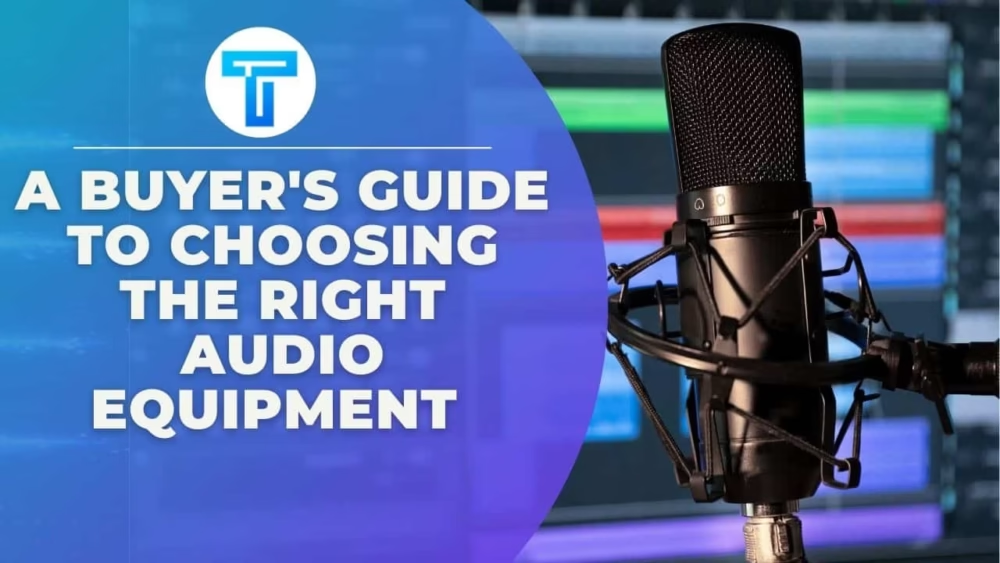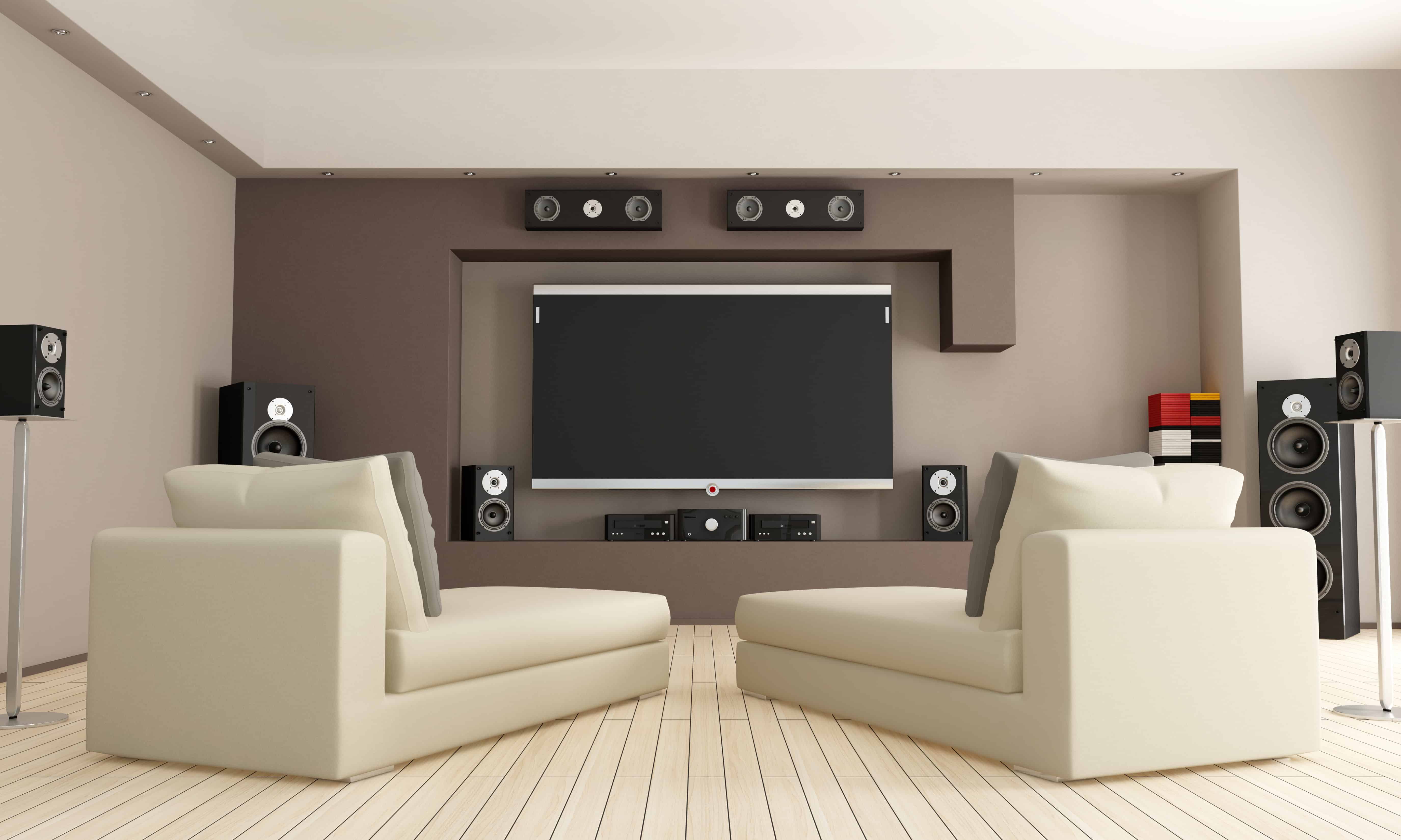An audio system consisting of high-quality audio equipment can make every day in your home, office, or studio just a little more enjoyable. It can make all the difference, whether you like to entertain other people using your home theater, use your audio system for conferences and meetings, set up a musica studio, or just listen to music while working in your office or cleaning and cooking at home.

Simply put, music makes people feel good. However, how good you’ll feel depends on the sound quality of your audio equipment. To help you get the best audio equipment for your home or office audio system, take a look at our buying guide:
Figure Out What Equipment You’ll Need
First, determine what audio equipment you’ll need to purchase. This is a vital step before you start thinking about what features you’ll require. Since there’s so much information buyers have to think of, this can be one of the most challenging, if not the most challenging, steps to take.
To figure out what equipment you’ll need, ask yourself the following questions:
- What’s the size of your room?
- What equipment do you own or already have (if any)?
- The number of microphones you’ll need
- Do you prefer passive speakers or powered speakers?
- Speakers in stands or flying speakers; which do you think is better?
- Will you use monitors?
- Will you run cabling? How far?
- Do you need an effects processor?
- Will your setup be temporary or permanent?
Commonly Used Types Of Audio Equipment
Note that there are many options to choose from when buying audio equipment. However, below are the commonly used ones:
- Audio Analyzers – Audio analyzers, like Audio Precision audio analyzer, are used to measure SP values, reverb time, frequency response attributes, and the phase correlation of an audio device. It’s a really handy tool when assessing a gadget for any deficiency.
- Microphones – This is a piece of audio equipment that remained almost the same throughout the years. It hasn’t changed a lot despite being one of the oldest audio equipment you can still find today. Different microphone types include handheld microphones, dynamic microphones, shotgun microphones, lavalier microphones, and built-in microphones.
- Digital Audio Workstation – When you’re recording, creating, and editing audio files, the digital audio workstation (DAW) is the primary software you’ll use.
The digital audio workstation’s visual appearance hasn’t changed a lot. It was meant to resemble an analog mixing board’s feel and look. The DAW also plays a role in electronic music production.
The market offers numerous options for a digital audio workstation. The ideal one is a matter of personal preference. However, the different DAWs available incorporate some standard features, such as multitrack recording, filtering, and tempo or pitch modification.
- Preamplifier – This electronic equipment boosts weak electrical signal strength. It’s a piece of vital audio equipment for people who record sound. It’s also popularly referred to as a preamp. The reason why the preamp is perfect for sound recording is that it effectively avoids sound recording noise interference, improving sound quality.
Take note that while amplification is essential in sound recording, you should prevent clipping by considering the audio levels every time you use the preamplifier. Clipping may be necessary if you fail to do it due to the highest level of loudness or the clipping point has been reached.
- Headphones – Gaming, consumer, and studio headphones are the different headphone types.
However, go for studio headphones if you plan to use your headphones for professional work. That’s because you can tune them through their neutral sonic balancing to meet your specific objective. As a result, there’ll only be minimal colored sounds produced, allowing you to mix tracks more effectively.
- Audio Interface – Transmission of music into a computer while recording and conveying compute signals during playback are the two main roles that traditional audio interfaces perform. However, many other features have been added to the modern versions, including mic preamps, headphone amps, digital conversion, DI boxes, and monitor management. Therefore, an audio interface links the digital sounds and the traditional analog audio.
- Speakers – Speakers are the most popular audio equipment available on the market. Choose a speaker based on your needs since they’re being sold in different sizes and different price ranges.
The different types of audio equipment available on the market each serve a unique purpose. However, the pieces of equipment mentioned above are the critical ones you need to achieve your goals to have an audio system at home, your office, or your studio.
Know Your Room’s Size
The physical size of your room has a significant impact on the type of audio equipment you’ll need. In fact, as pointed out above, it’s one of the questions you’ll need to when figuring out what equipment you’ll require for your audio or sound system.

Obviously, you won’t need as many amplifiers and speakers for a small room. The last thing you want is to purchase more gear than you need. That’s because they may be too outdated to function effectively by the time you actually need to use them. In other words, you’ll only be wasting funds when you buy more gear than your room requires.
The acoustics that may be built-in in your room is another thing to consider. It cuts down on the number of microphones and speakers you’ll need by naturally amplifying sound throughout the room.
Wired or Wireless?
Is wired or wireless the right audio equipment in today’s age of Bluetooth and wireless gadgets?
With wireless systems, you only need to pair everything, and you’re done. This means you don’t have to deal with pesky wires. That’s why it might seem the easiest setup option. However, there are challenges to using wireless audio equipment, though, such as frequency changes. As you change your equipment, you may also encounter problems related to frequency compatibility. It’s essential to note that the cost of wireless equipment also tends to be higher than the wired ones.
Wired systems do have their own challenges as well. They require additional cables and are more challenging to install, not to mention that you also have to hide any cabling or get them out of the way if you want to achieve a neat look for your audio setup.
If you’re after the simplicity of installation, consider wireless. However, it’s best to go for wired audio equipment if you want to avoid compatibility issues.
Think Multi-Purpose
Try to purchase multi-purpose equipment if possible. For instance, get microphones designed for talking, singing, and recording (perfect for podcasting). Also, when searching for speakers, pick ones that you can fully adjust to optimal sound for speaking and music.
Cheaper Audio Equipment Isn’t Always The Better Option
The low-cost audio equipment you’re interested in is probably cheap for a reason. As the saying goes, people do get what they pay for. Yes, it’s an old saying, but it happens sometimes.
The cheaper option won’t sound great in a professional setting, although it might work well for slumber parties in a kid’s bedroom.
However, having an unlimited budget that’ll allow you to customize your audio system to exactly fit your ideals isn’t realistic for most people. Nonetheless, it’s still possible to achieve your goals even with a modest budget.
So, if you can’t get top-of-the-line products, focus more on getting the right audio equipment within your price range. Make sure you’re purchasing the right equipment by taking the following into consideration:
- Save money by considering lightly used but quality audio equipment. Note that it’s a great idea only if you make sure that you’ll have a chance to test the device yourself before shelling out money for it.
- Many retailers offer discounts to customers who buy complete systems. So, consider purchasing entire systems at once instead of buying one component at a time.
- Only buy what the size of your room requires. Again, a small space won’t need the same system that a bigger room requires.
- Only purchase audio equipment that you can actually manage (some complex equipment require specialized skills or knowledge so the user can make the most of it. Others, especially larger ones, need a team to manage it.)
Purchase Scalable Equipment
Everybody loves good sound quality. That’s why many people invest in both acoustic changes, such as building a room with built-in acoustics or adding in acoustic panels, as well as audio equipment. Respect your investments by going for pieces of audio equipment that are scalable.
For instance, you don’t want to purchase audio equipment that can’t support anything more than what you have at present, especially if you plan to expand your home theater, conference room, or studio. You’ll have devices that grow with you if you choose to spend a little more now. The last thing anyone wants is to get new pieces of audio equipment every few years as their audio needs grow.
Bottom Line
An audio system consisting of quality audio equipment is a worthwhile investment. Provided that proper maintenance is followed, your audio system will last longer and you can guarantee that it’ll function efficiently.
Keep in mind that what you’ve learned here is only a guide. If you want to experiment with the pieces of audio equipment available to achieve a more satisfying and exciting listening and recording experience, feel free to do so.

